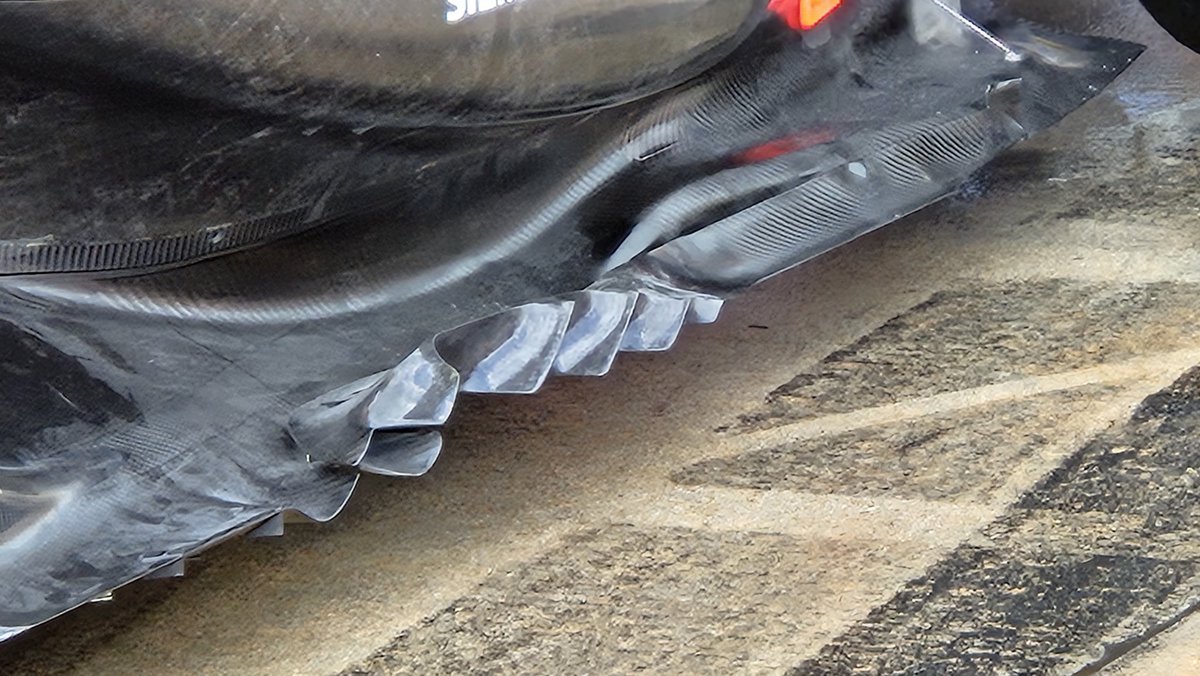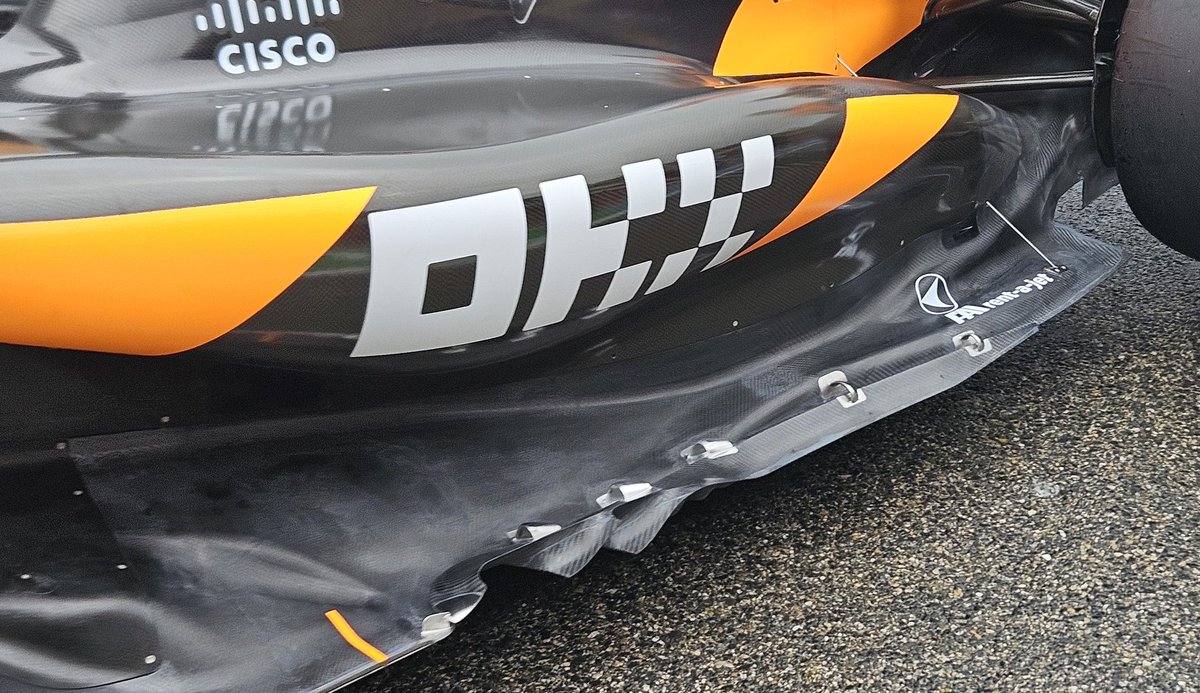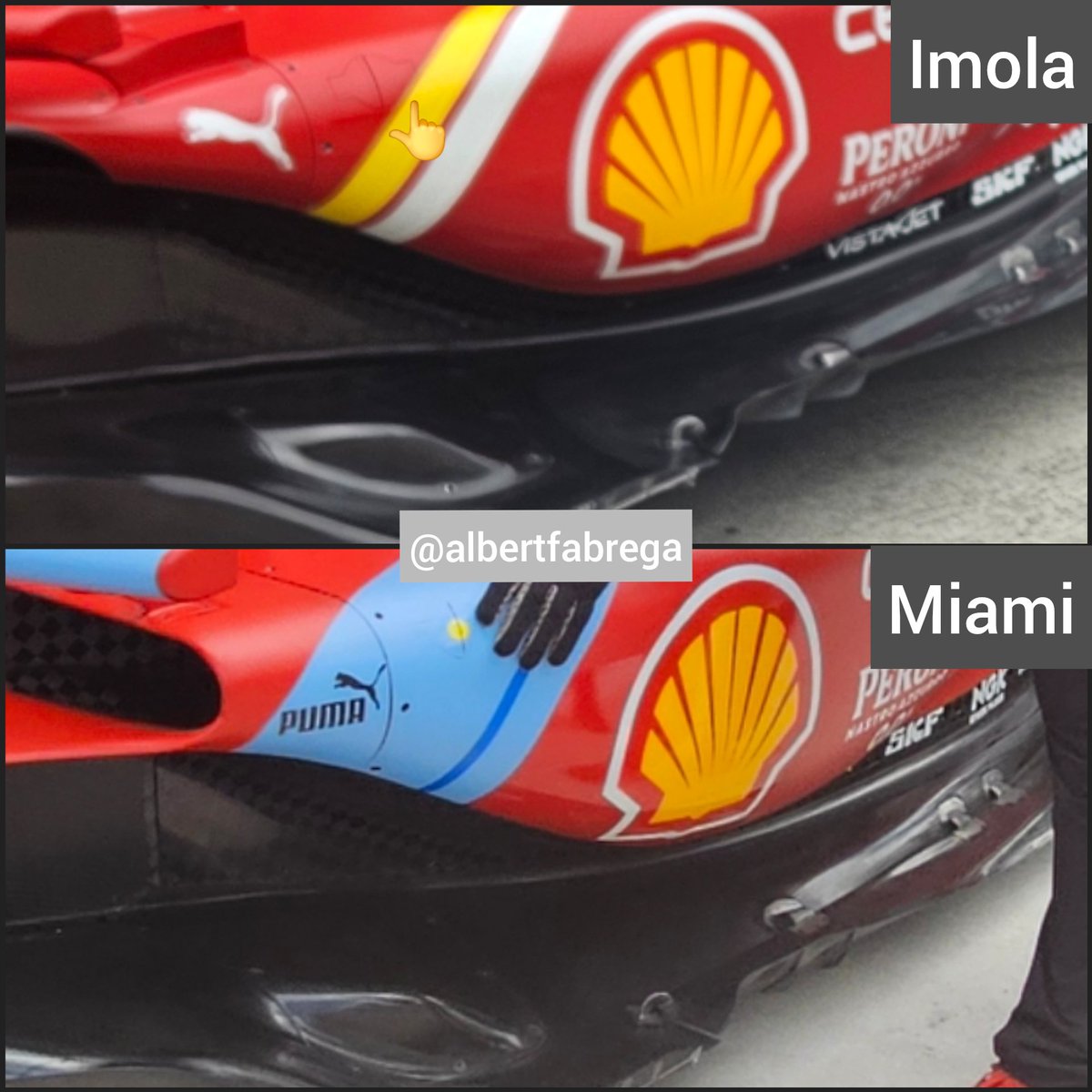Easiest guess here is that there's still a boundary layer sucking S-duct within the vertical bit, (presented above by Vanja) and this is the outlet. Both inlet and outlet are smaller now.
- Login or Register
No account yet? Sign up
Easiest guess here is that there's still a boundary layer sucking S-duct within the vertical bit, (presented above by Vanja) and this is the outlet. Both inlet and outlet are smaller now.
Have the floor vanes changed at all? I compare them to launch spec but I am having difficulty finding any differences.



Vanja #66 wrote: ↑14 Feb 2024, 22:19The (W15) undercut g-line is quite clean, undercut throat is about the same as AMR, McLaren and Ferrari. On the other hand, the bottom side of the inlet is a really lovely solution in my view. For a team that can afford slightly smaller side inlets this might be the best solution overall. Basically, the "vertical" area near the chassis is part of the inlet and so you "take away" the inlet surface from elsewhere. This allowed them to narrow the inlet overall, reduce the local drag on the outboard section of the sidepod and potentially improve the flow behaviour in yaw in this area, ie prevent separation in adverse conditions.
At the same time, if you have a straight horizontal inlet this same inboard area would feature the most pressurisation, ie drag, so they've said - ok, we have drag there anyway, let's use it as inlet. Another thing is - they do a bit of boundary layer clean up at the same time. I'd say this solution is inspired by their launch-spec W14 inlets and some advantages it offered. Finally, they combined the horizontal and the vertical part with an arch which has a natural curvature to propagate a bit of outwash as well as provide just enough pressurisation to deal with the front wheel wake. AMR, McLaren and RB are now committed to different solutions, but I think Ferrari will definitely want to thoroughly examine this kind of geometry.
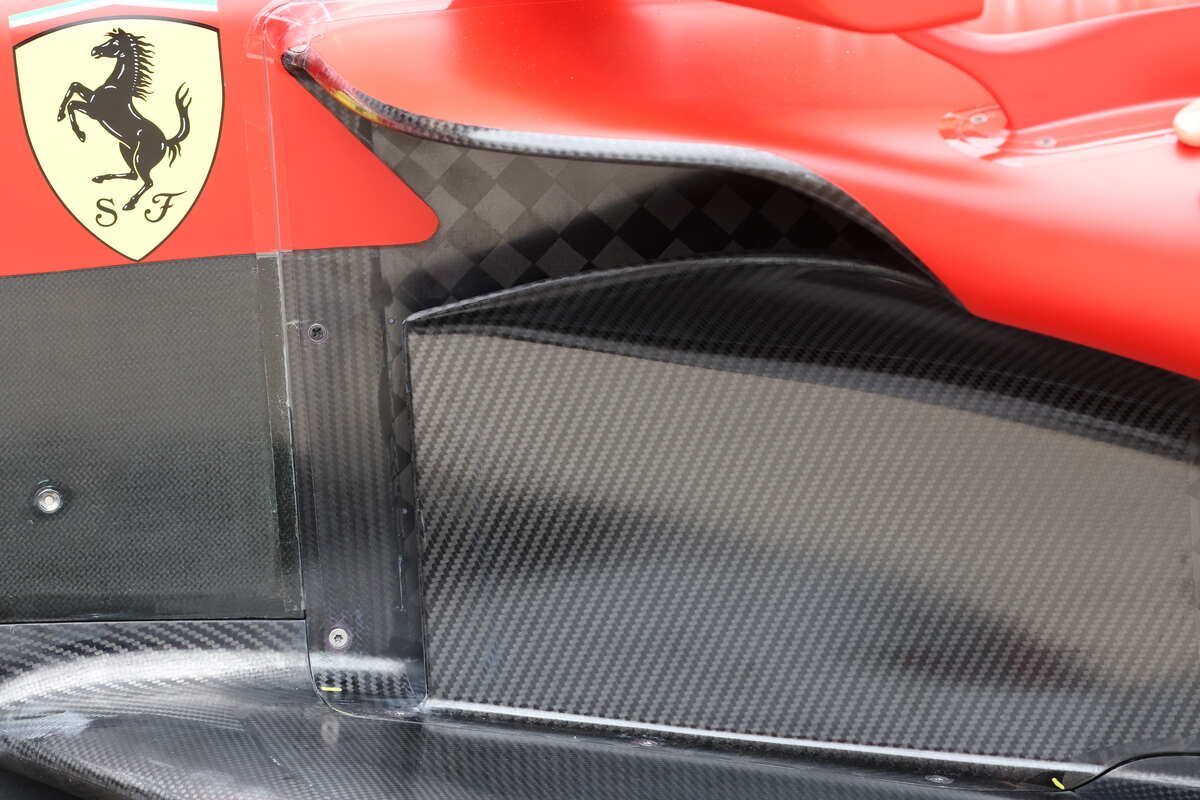
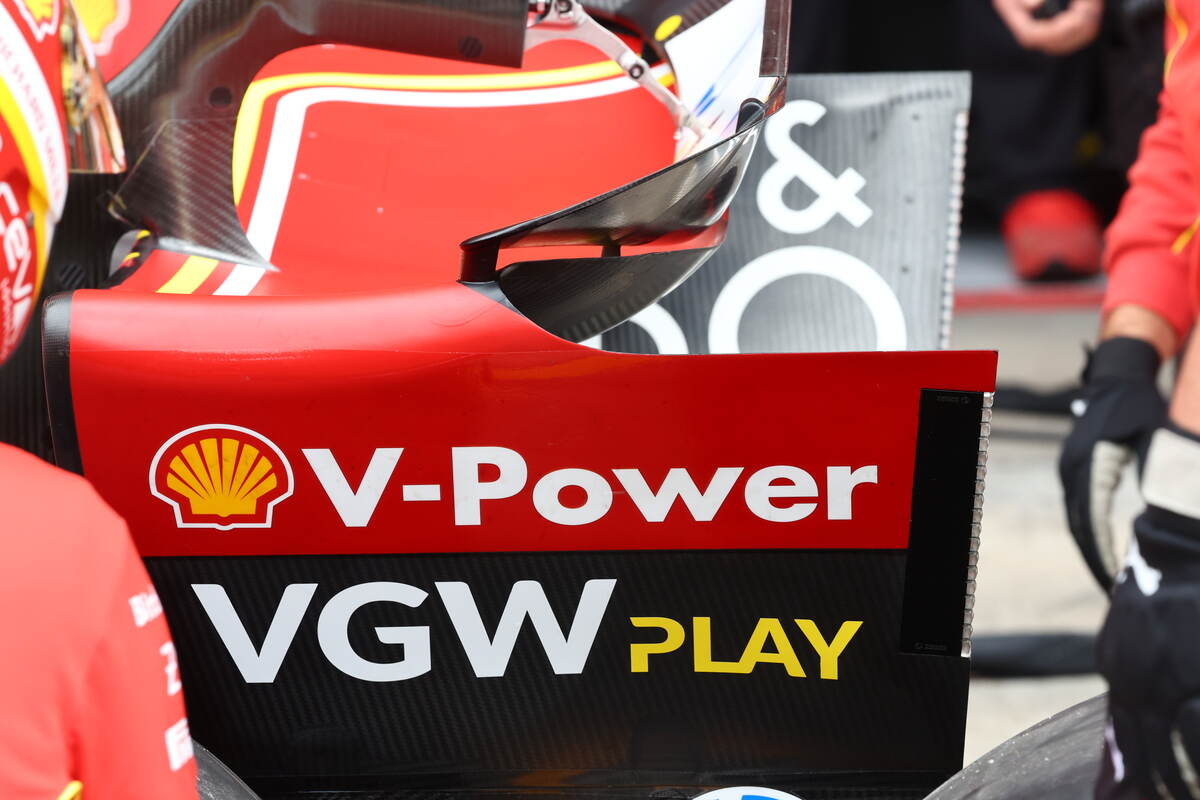


Just missing the shroud.Emag wrote: ↑16 May 2024, 17:54Was this part of the rear suspension always like this? Or is it a practice-only part that allows for easier setup changes?
https://i.imgur.com/hlFgLuG.png
AbsolutelyPlatinumZealot wrote: ↑16 May 2024, 17:53@Vanja
The rear wing flap end treatment i think is also about squeezing every little percentage of usable wing span out of it. The sharper edge gives more internal span. I think the locally curved in portion you speak of does indeed alighns better with local flow... Though I think the degree of how much this curves inward depends on which wing is used track to track.
So they are actually reducing the tunnel roof height locally (and not increasing it as we thought), but also the edge wing is far lower and more aggressive now. Seemingly, they are trying to claw back the raw downforce they gave up on with SF23B since Barcelona.
Vanja #66 wrote: ↑16 May 2024, 19:00AbsolutelyPlatinumZealot wrote: ↑16 May 2024, 17:53@Vanja
The rear wing flap end treatment i think is also about squeezing every little percentage of usable wing span out of it. The sharper edge gives more internal span. I think the locally curved in portion you speak of does indeed alighns better with local flow... Though I think the degree of how much this curves inward depends on which wing is used track to track.
By the way, it looks like Red Bull is introducing a very similar concept at the rear wing flap.
AHA, that's why they extensively test different ride heights in Fiorano.Vanja #66 wrote: ↑16 May 2024, 19:00AbsolutelyPlatinumZealot wrote: ↑16 May 2024, 17:53@Vanja
The rear wing flap end treatment i think is also about squeezing every little percentage of usable wing span out of it. The sharper edge gives more internal span. I think the locally curved in portion you speak of does indeed alighns better with local flow... Though I think the degree of how much this curves inward depends on which wing is used track to track.
So they are actually reducing the tunnel roof height locally (and not increasing it as we thought), but also the edge wing is far lower and more aggressive now. Seemingly, they are trying to claw back the raw downforce they gave up on with SF23B since Barcelona.
This should allow them two things now compared to launch floor - on flatter tracks they will be able to drop the car as low as they do it now, but they will have more downforce. On bumpier tracks they will have to increase the ride height, but they may be able to use softer springs and dampers and gain on slower sections without losing in quicker segments. Of course, it depends on their ability to keep the car from bouncing and the floor (in)stability while cornering.
The floor edge is very big. The hingers are deep in towards the side pods. Not new but I just noticed how much of the floor is the floor blade.
